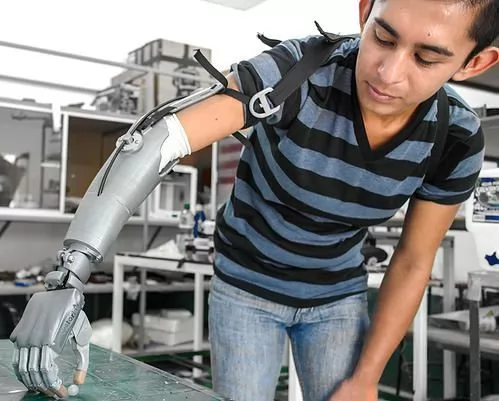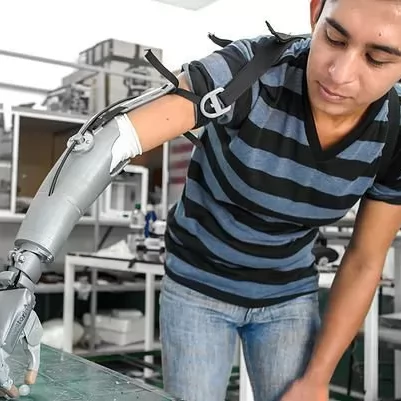Above Elbow Arm Prosthetics
Product Categories
Above Elbow Arm Prosthetics
Above-Elbow Arm Prostheses
These prostheses are generally used following transhumeral amputation. They are designed to compensate for the loss of the upper part of the arm above the elbow and aim to restore the functions of the upper arm.Components of Above-Elbow Arm Prostheses:
Socket: In above-elbow prostheses, the socket is custom-made to fit precisely to the user’s residual arm. This ensures the prosthesis is securely attached to the body.Arm Movement Mechanisms:
Mechanical Systems: For simple movements, some prostheses operate using the user’s arm strength, but generally more sophisticated systems are required.Electric and Microprocessor Systems: These prostheses move by detecting the user’s muscle contractions or EMG (electromyography) signals. Microprocessor control systems make the movements more natural and allow for more precise control.
Elbow Joint and Arm Control: One of the most important components in above-elbow prostheses is the elbow joint. The loss of the elbow, similar to leg prostheses, creates challenges for functional operation. However, modern prostheses can be designed to enable effective use of the prosthetic elbow joint.
Hand Components: The terminal part of the arm prosthesis can be customized according to the user’s lifestyle. Various types of hand components (mechanical, electric, or aesthetic) can be selected. Users can comfortably perform activities requiring fine motor skills such as gripping, holding, and writing.
Advantages of Above-Elbow Arm Prostheses:
Enhanced Functionality: Electric and microprocessor systems allow users to perform finger, hand, and arm movements more naturally. They are especially useful for activities requiring fine motor skills like writing and eating.Independence and Mobility: Above-elbow prostheses can increase the user’s independence in daily life. Tasks such as personal care, carrying objects, or eating become possible.
Custom Design: Prostheses can be designed to meet the user’s physical needs and produced in colors and shapes that suit the user aesthetically.
Rehabilitation and Adaptation:
Above-elbow arm prostheses require a comprehensive rehabilitation process to help the user adapt quickly to the new prosthesis. This process teaches the user how to move the prosthesis and which muscles to use. Additionally, special training is provided to maintain balance and perform daily activities.Above-elbow arm prostheses are an important technological solution to improve quality of life and enable a more independent lifestyle.


